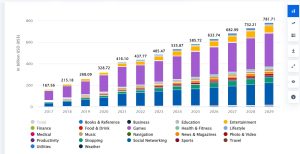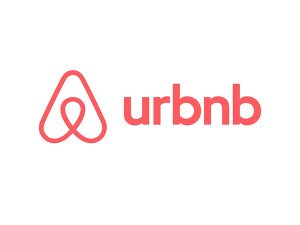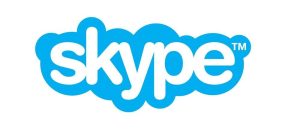Over the years, the mobile app market has consistently expanded, with each year seeing a rise in revenues across various app categories. According to Statista, revenue is going to surge to $781.71 billion by 2029.

Just a few years ago, building an app used to be a huge, time-consuming investment. Many projects ran out of budget before even hitting the market.
Around this time, businesses were looking for even smarter ways to build apps, and that’s where React Native came into the limelight. Today, among all options to develop mobile apps that would run seamlessly on both iOS and Android, one of the most popular methods is going through React Native. Why? It saves time, reduces costs, and keeps development simple.
In this blog post, let’s discuss the pros and cons of React Native and why you’d want to have it for your next app project.
If you want to develop an app and are wondering about the cost then our detailed guide on app development cost will help you!
Need A High-Performance Mobile App For Both iOS And Android?
Let our skilled developers create it for you.
Hire Expert
What is React Native?
React Native is an open source framework developed by Facebook that allows developers to create mobile apps for both iOS and Android platforms using a single codebase.
Traditionally, building apps for these two platforms required writing separate code for each, leading to higher development costs and longer timelines. With React Native, developers can write one set of code in JavaScript and deploy it on both platforms, which saves time and resources.

It also supports integration with native code when needed, offering developers flexibility to fine-tune certain features or functions.
One of the key reasons React Native has become so popular is its ability to create apps that perform almost as well as native apps, meaning users can enjoy smooth, fast, and reliable experiences without knowing the app was built with a cross-platform tool.
Read more about popular app development frameworks
Benefits of React Native (React Native Pros)
Understanding the pros and cons React Native brings to app development will help you make an informed decision about whether it’s the right framework for your project.
Now let us start with some of the basic React Native advantages, that are useful for both businesses and developers.
Business Advantages of React Native
| Aspect |
Description |
| Cost Efficiency |
Reduces the need for separate iOS and Android development teams, cutting down on overall development costs. |
| Shorter Time-to-Market |
Allows faster app deployment by using the same codebase for multiple platforms, leading to quicker product launches. |
| Seamless User Experience |
Provides a native-like experience across platforms, ensuring users get a smooth, responsive app experience. |
| Strategic Flexibility |
Ideal for prototyping and Minimum Viable Products (MVPs). This is because it lets business organizations quickly test new ideas and their feedback. |
| Resource Optimization |
Businesses can allocate resources more efficiently by using a single development team for both iOS and Android. |
| Easy Integration with Existing Systems |
Allows businesses to integrate new apps with existing native systems and infrastructure seamlessly. |
| Wide Adoption by Big Brands |
Many popular apps, such as Facebook, Instagram, UberEats, have successfully built cross-platforms using React Native; big businesses do believe in this technology. |
1. Cost Efficiency and Resource Optimization
React Native’s cost efficiency allows businesses to focus on bringing innovative mobile app ideas to life without worrying about skyrocketing development costs. Because developers need to write only one codebase for iOS and Android, businesses can greatly reduce the costs of development. In the end, React Native helps businesses launch apps without breaking the bank.
2. Shorter Time-to-Market
It allows you to reuse your code across both the systems, which in turn reduces the development time quite a bit. You use the same code on both the operating systems, and therefore don’t have to wait for isolated cycles of development. It brings down the time-to-market, giving businesses a competitive edge when launching new products.
3. Seamless User Experience
Apps built with React Native offer a native-like user experience. The framework uses native components, meaning the app feels responsive and smooth, just like apps built with traditional native code. This ensures a great user experience without the high cost of building native apps.
4. Strategic Flexibility and Prototyping
When weighing React Native pros and cons, flexibility and cross-platform compatibility stand out as major advantages for businesses. If your business is still in the idea phase or working on an MVP (Minimum Viable Product), React Native is a great choice.
It allows for rapid prototyping and quick iterations, making it easy to test new features, gather user feedback, and adjust the app before fully committing to development. A crucial step in this process is creating detailed wireframes to visualize the app’s layout and flow. Check out our guide to creating mobile app wireframes for insights on how to get started.
5. Integration with Existing Infrastructure
React Native easily integrates with other existing systems, tools, and third-party plugins. If you already have some native code, you can combine it with React Native, ensuring smooth integration and minimal disruption to your app’s development. To make this integration process even more efficient, using the right development tools is key. Check out our top React Native Integrated Development Environments (IDE) for insights on how to choose the best setup for your project.
Development Advantages of React Native
| Aspect |
Description |
| Code Reusability |
Developers can reuse up to 90% of code across both iOS and Android, speeding up development significantly. |
| Live and Hot Reloading |
Developers can instantly see the results of code changes without restarting the app, improving productivity. |
| Modular Architecture |
React Native’s modular approach allows teams to work on different modules of the app independently, speeding up development. |
| Access to Pre-Built Components |
A vast library of pre-developed components and open-source solutions reduces development time and effort. |
| Community Support |
The large, active developer community provides access to countless resources, libraries, and troubleshooting tips, helping to solve problems quickly. |
| Cross-Platform Compatibility |
You can use the same codebase for web apps, combining React, React Native, and React Native Web. This streamlined approach makes it easier to develop and maintain apps across multiple platforms. |
| Fast Iterations |
React Native’s features like Hot Reloading and modular structure allow for rapid iteration cycles, improving the app development process. |
| Support for Hybrid Apps |
React Native can integrate with existing native apps, allowing developers to use native code when necessary for better performance. |
1. Code Reusability
Code reusability is one of the strong advantages of React Native. The same code up to 90 percent of it can be reused in both iOS and Android, and therefore, it is quite fast for development. Plus, you can use the same UI code on both platforms while still having the flexibility to tweak specific components when needed. This cuts down the testing and debugging time because one is working with a single codebase for multiple platforms.
2. Live and Hot Reloading
Live Reloading and Hot Reloading are the two features supported by React Native, which significantly speeds up the development process. Live Reloading reloads the entire app, while Hot Reloading is used for real-time code implementation without requiring an application restart. This means developers can instantly see the impact of their code changes, leading to quicker iterations and a more efficient workflow.
3. Support for Modular Architecture
Modular architecture is another essential benefit that React Native boasts of. Because it uses separated modules, various parts of the application can be divided into pieces for easier collaboration on the project. It’s particularly helpful for large teams because different teams can simultaneously work on different parts of the app.
4. Access to Pre-Developed Components and Libraries
React Native comes with a wide range of pre-built components and open-source libraries. Such elements save developers much time since they do not need to build everything from scratch. Either it is simple UI elements or rather complex functionalities, you will find that there is already a pre-existing solution for that.
5. Vibrant Community Support
Being open-source, React Native has an enormous as well as extremely active pool of developers. This ensures there are numerous resources, tutorials, and libraries other than third-party which makes it easy to find the answers that one needs and thereby shortens the learning curve. It is always developing new tools thus making it one of the most developer-friendly frameworks out there.
Disadvantages of React Native (React Native Cons)
While React Native offers numerous benefits, it’s essential to be aware of the limitations before committing to it. Here are some key React Native cons to consider:
| Aspect |
Description |
| Frequent Updates |
React Native evolves quickly, requiring businesses to invest in ongoing maintenance and frequent updates to stay up to date. |
| Limited Performance for Complex Apps |
While React Native performs well for most apps, businesses developing apps with heavy animations, advanced graphics, or intensive processing may experience performance issues. |
| Security Concerns |
React Native may not be the best choice for apps requiring high levels of security (e.g., financial or healthcare apps), as JavaScript is more vulnerable to security threats. |
| Longer Initialization Times |
Apps built with React Native might have slower initial loading times, which can impact user experience, particularly for apps that need to load quickly. |
| Not Suitable for Highly Complex Projects |
For apps with highly complex or specialized functionality, native development may still be more appropriate, requiring more investment and resources. |
1. Maintenance and Frequent Updates
One of the major drawbacks here is that it requires frequent updates. As it develops very rapidly, changes are being made to new releases, and developers have to keep on adjusting the application to accommodate them. It actually makes maintenance time-consuming and expensive if your application demands long-term support..
2. Limited Performance for Complex Apps
React Native can handle most apps but is undermined when dealing with complex applications and heavy animations, graphics, or intensive processing. In such instances, a fully native app may prove to be the better choice because it facilitates smooth user experiences and better performance of complex interfaces.
Development Disadvantages of React Native
| Aspect |
Description |
| Debugging Complexity |
Debugging in React Native can be more complex, as it involves both JavaScript and native code, requiring developers to have expertise in both areas. |
| Immature Framework |
Compared to native frameworks like Swift or Kotlin, React Native is still relatively new, which means certain lifecycle methods and components can be less reliable. |
| Memory Management |
For computation-heavy apps, React Native may struggle with efficient memory management, leading to reduced performance, especially for apps that require extensive calculations. |
| Performance Limitations |
While React Native works well for most use cases, apps with complex gestures, animations, or resource-intensive features may not perform as smoothly as native apps. |
| Limited Native API Access |
Some platform-specific features require native modules to be written, which adds complexity and may require developers with native development skills. |
1. Immaturity of the Framework
Despite its popularity, React Native is still relatively young compared to fully native development frameworks like Swift or Java/Kotlin. This immaturity means that some of its lifecycle methods and components may not be as polished, leading to bugs and unpredictable behavior in certain scenarios.
2. Difficulty in Debugging
Debugging using React Native would be quite challenging as it involves mixed JavaScript and native code. This makes it a tough process, especially when problems arise within the native parts of the application. Developers need to be pretty robust in their proficiency with both JavaScript and the native languages like Swift or Kotlin in order to make effective resolutions in case of problems.
3. Low Security for Sensitive Applications
The critical issue in this regard is that React Native is an open source platform, and JavaScript is heavily used, so it may not be the best option for apps requiring high security. For highly sensitive applications like mobile medical apps, a banking or financial app, security concerns should be a top priority, and React Native may not always be the ideal choice.
4. Longer Initialization Time
Apps built with React Native may experience slower initialization times compared to native apps. This delay is often caused by the JavaScript thread taking longer to initialize, which can be noticeable, especially in apps that need to load quickly for users.
5. Memory Management
For apps that require intensive computations, React Native may not be the best fit. It uses JavaScript, which handles memory management less efficiently than native platforms. This could lead to reduced performance in memory-heavy applications, such as those that require extensive calculations or data processing.
Want To Launch Your App Quickly And Efficiently?
Let our team of expert developers handle everything from start to finish.
Hire Expert
Popular Apps Built with React Native
Many popular companies have adopted React Native for their mobile app development due to its cost efficiency, flexibility, and ability to deliver near-native performance. Here are a few well-known apps that have successfully been built using React Native:
1. Facebook

As the creator of React Native, Facebook naturally uses the framework for various parts of its mobile app. The company initially developed React Native to improve their own development process, and it has since become a core technology for the Facebook app, particularly the Ads Manager.
2. Instagram

Another major player leveraging React Native is Instagram. The social media giant adopted React Native to improve development speed and user experience, starting with their push notification feature and later expanding it to other parts of the app.
3. UberEats

UberEats serves as a perfect example of the cross-platform app that needed smooth functionality combined with an eye-pleasing, intuitive user interface. React Native gave UberEats an ease in development across both iOS and Android markets and integration into the former while maintaining a unified user experience.
4. Airbnb

Before Airbnb moved to a fully native approach, they utilized React Native for a significant portion of their mobile app development. They found that React Native allowed them to push features and updates faster, providing value to both their customers and development team.
5. Skype

Skype, the most utilized application to deliver communication, adopted React Native for its mobile version. The company quickly rebuilt its application, ensuring a better experience for the users with much smoother performance on devices.
Major implementations of React Native from the above examples show promise to maintain high performance cross-platform applications with native-like experiences for the users.
Our Experience with React Native
We have created a long list of applications with React Native in our development company and have firsthand experience with the advantages the technology offers to businesses and developers alike-from speeding up development timelines, cutting costs, and ensuring seamless user experiences, React Native has proven to be a versatile and reliable tool in our toolkit.
1. Faster Development Cycles
One of the greatest strengths we have seen with React Native is how it dramatically accelerates the development cycle. By allowing us to reuse code across iOS and Android, we’ve been able to develop apps in a fraction of the time it would take with native development. This is especially valuable for clients looking to launch quickly or test their MVPs in the market.
Read more about the app development lifecycle
2. Seamless Integration with Existing Code
We have also found that React Native really mixes well with native codebases already in existence. This flexibility allows us to utilize the best strengths of native and cross-platform development, especially when an app has particular features that need to be optimized natively while still maintaining the cost-efficiency of React Native.
3. Collaborative and Modular Development
The framework’s modular architecture has made it easier for our teams to work collaboratively. Developers can work on different modules of the app simultaneously without stepping on each other’s toes, leading to smoother workflows and faster project completion.
4. Real-Time Feedback with Live Reloading
One of the most exciting aspects of working with React Native is its live reloading feature. It allows our developers to instantly see the effects of the code changes they make without restarting the entire application. This has significantly sped up our debugging process and improved efficiency during the development phase.
5. Support from the React Native Community
The vibrant React Native community has been an invaluable resource. With a wealth of pre-built components and third-party libraries available, our developers have been able to find solutions quickly, allowing us to focus on delivering high-quality apps for our clients. The community also continuously improves the framework, meaning we can rely on up-to-date resources and best practices.
Once you’ve built your app with React Native, the next step is publishing it. Learn more about how to publish your app to the Google Play Store.
You Bring The Idea; We’ll Bring The Expert Execution.
Let’s build something awesome, with a team that’s delivered countless successful app development projects
Hire Expert
Conclusion
We’ve discussed the react native advantages and disadvantages in detail. React Native has undoubtedly revolutionized the world of mobile app development. With its ability to create cross-platform apps using a single codebase, businesses can save on both time and costs while delivering a high-quality, near-native experience to users.
The framework offers several benefits, such as code reusability, a large community support system, and faster development cycles. It’s no surprise that many popular companies like Facebook, Instagram, and UberEats have turned to React Native to power their mobile apps.
However, React Native does have its limitations. It may not be the best choice for apps that require complex animations, advanced security, or heavy processing power. Frequent updates and debugging challenges can also be a drawback for some projects, and developers need to have a good understanding of both JavaScript and native code to overcome certain hurdles.
By weighing the React Native pros and cons, you can determine whether this framework aligns with your project’s needs and provides the right balance of efficiency, flexibility, and performance for your app.
If you’re considering building a mobile app and want to explore how React Native can fit into your project, our development team has years of experience in React Native app development to help you every step of the way. We offer expert consultation for free, valued at $700.
FAQs











![Logistics Mobile App Development Cost in 2025 [Easy guide]](/_next/image?url=https%3A%2F%2Finhouse.pulse-force.com%2Fwordpress%2Fbitswits%2Fwp-content%2Fuploads%2F2025%2F03%2FLogistics-App-Development-Cost.jpg&w=1080&q=75)






